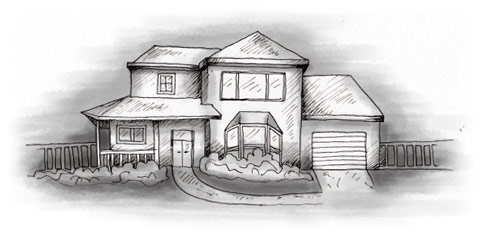The amount you can borrow depends on various factors such as your income, trade or profession, whether you’re an employee or self-employed, and whether you’re married, and if so, whether your partner works. Lenders may also have a maximum lending limit based on a percentage of your income, but this isn’t required by law.
Most banks offer mortgages of up to 80 per cent, although non-residents can usually borrow a maximum of 60 per cent only. To obtain a mortgage from a Spanish bank, you must usually provide proof of your monthly income and major outgoings (e.g. loans or commitments). There are no self-assessment mortgages such as in the UK and mortgages without proof of income (although advertised in the expatriate press) are difficult to find and virtually non-existent. If you want a Spanish mortgage to buy a property for commercial purposes, you must provide a detailed business plan in Spanish. Note that a mortgage can be assumed by the new owner (called subrogación) when a property is sold, which is a common practice in Spain.
Mortgages from foreing lenders
Some foreign lenders apply stricter rules than Spanish lenders regarding income, employment and the type of property on which they will lend. Foreign lenders, e.g. offshore banks, may also have strict rules regarding the nationality and domicile of borrowers (some won’t lend to Spanish residents), and the percentage they will lend.
They may levy astronomical charges if you get into arrears. If you raise a mortgage outside Spain for a Spanish property, you should be aware of any impact this may have on all your tax liabilities or allowances.
Spanish mortgages have been among the most competitive in Europe and in mid-2006 variable interest rates were around 4 per cent. Around 90 per cent of home loans in Spain have a variable (interés variable) instead of a fixed interest (interés fijo) rate and they’ve traditionally been set at 1 to 2 per cent above the base rate (European inter-bank rate or EURIBOR).
Although interest rates have remained low and relatively stable over the last two years, they’ve nevertheless risen and the Spanish Mortgage Association (Asociación Hipotecaria Española (AHE)) recently expressed fears that they would rise again in the near future, affecting variable interest rate mortgage repayments. If you finance your purchase of a Spanish home with a mortgage, bear in mind possible (and likely) fluctuations in interest rates – a slight rise (even 0.25 per cent) can lead to substantial increases in monthly repayments.
If you cannot afford an increase in your mortgage repayments or if your income from letting is unlikely to cover the extra costs of an increase, think twice about financing an investment through a mortgage.
Maximum mortgages in Spain
Mortgages are granted on a percentage of the valuation, which itself is usually below the market value. The maximum mortgage in Spain is usually 80 per cent of the purchase price for a principal home ( vivienda habitual) and 50 to 60 per cent for a second home (segunda residencía). The normal term is 10 to 15 years, although mortgages can be repaid over 10 to 50 years. The repayment period may be shorter for second homes. Repayment mortgages are the most common, although endowment and pension-linked mortgages are also available.
Payments can usually be made monthly or quarterly. Experts claim that longer repayment terms aren’t necessarily beneficial to buyers. According to the Banking Association (Asociación de Usuarios de Bancos, Cajas y Seguros/ADICAE), an increase of ten years on a mortgage of €150,000 saves you €49 a month, but means you pay an extra €32,000 in interest. ADICAE recommend shopping around and carefully comparing rates and interest payments on mortgages of different repayment terms.
Note that you must add expenses and fees totalling around 10 per cent of the purchase price, to the cost of a property. For example, if you’re buying a property for €150,000 and obtain a 60 per cent mortgage, you must pay a 40 per cent deposit plus around 10 per cent fees, making a total of €75,000. There are various fees associated with mortgages, e.g. most lenders levy an ‘arrangement’ fee (comisión de apertura) of 0.5 to 2.5 per cent. Although it’s unusual to have a full survey carried out, most lenders insist on a ‘valuation’ before they will grant a loan. Mortgages also usually have a cancellation fee of around 1 per cent.
It’s customary for a property to be held as security for a home loan, i.e. the lender takes a first charge on the property, which is recorded at the property registry. If a loan is obtained using a Spanish property as security, additional fees and registration costs are payable to the notary (notario) for registering the charge against the property.
Spanish banks also often insist that you take out home insurance with them together with the mortgage, although you aren’t legally required to do so. Their rates are invariably higher than other insurers so it’s wise to shop around.
Remortgaging
If you have equity in an existing property, in Spain or abroad, then it may be more cost effective to re-mortgage (or take out a second mortgage) on that property, rather than take out a new mortgage for a second home in Spain. It involves less paperwork, and therefore lower legal fees, and a plan can be tailored to meet your individual requirements.
Depending on your equity in your existing property and the cost of your Spanish property, this may enable you to pay cash for a second home. Note, however, that when a mortgage is taken out on a Spanish property it’s based on that property and not the individual, which could be important if you get into repayment difficulties.
Foreign Currency Loans in Spain
It’s also possible to obtain a foreign currency mortgage, other than in euros (in Spain or abroad), e.g. pounds sterling, Swiss francs or US dollars. In previous years, high Spanish interest rates meant that a foreign currency mortgage was a good bet for many foreigners. However, you should be extremely wary about taking out a foreign currency mortgage, as interest rate gains can be wiped out overnight by currency swings and devaluations. It’s generally recognised that you should take out a mortgage in the currency in which you’re paid or in the currency of the country where a property is situated.
In this case, if the foreign currency in which you have your mortgage is heavily devalued, you will have the consolation of knowing that the value of your Spanish property will (‘theoretically’) have increased by the same percentage when converted back into euros. When choosing between a euro and a foreign currency loan, take into account all costs, fees, interest rates and possible currency fluctuations. Irrespective of how you finance your purchase, you should always obtain professional advice.
If you have a foreign currency mortgage, you must usually pay commission charges each time you transfer foreign currency into euros or remit money to Spain. If you let a second home, you may be able to offset the interest (pro rata) on your mortgage against letting income. For example, if you let a property for three months of the year, you can offset a quarter of your annual mortgage interest against your letting income.
If you need to obtain a mortgage to buy a home in Spain, shop around and compare interest rates, terms and fees from a number of banks and financial institutions – not just in Spain, but also your home country.
Mortgages in Spain are generally for a shorter period than in the UK and US, and therefore your repayments may be much higher than you expect.
Payment Problems & Changing Lenders
If you’re unable to meet your mortgage payments, lenders are usually willing to re-schedule your mortgage so that it extends over a longer period, thus allowing you to make lower payments. You should contact your lender as soon as you have payment problems, as lenders are quick to embargo a property and could eventually repossess it and sell it at auction, which can take just a few months.
It’s relatively easy to change your mortgage lender or re-negotiate mortgage terms with your existing lender: lenders are required to issue a list of conditions and interest rates (hojas vinculantes) that are binding on the lender for ten days. This enables applicants to compare rates and allows existing mortgage holders to transfer their mortgage if their present lender cannot meet the terms offered by another lender.
There are two ways of improving existing mortgage terms: by ‘compulsory substitution’ (subrogación forzosa), whereby the lender offering more favourable terms/interest rates takes over the existing mortgage, and by ‘variation’ (novación modificativa), whereby the existing lender offers a reduced interest rate or changes the repayment period.
Some lenders offer to pay all the associated expenses if you switch your mortgage to them. Banks may charge a maximum of 2.5 per cent when a lender wishes to cancel a mortgage with fixed interest and take one with a variable interest (a common event when interest rates are falling). If you wish to re-negotiate your mortgage terms, it’s a good idea to contact your branch manager to see what sort of deal your bank is prepared to offer you – most banks are keen to keep their mortgage customers.
If you’re a Spanish taxpayer, you can claim a deduction for your Spanish mortgage against your tax liabilities.
This article is an extract from Buying a home in Spain. Click here to get a copy now.


